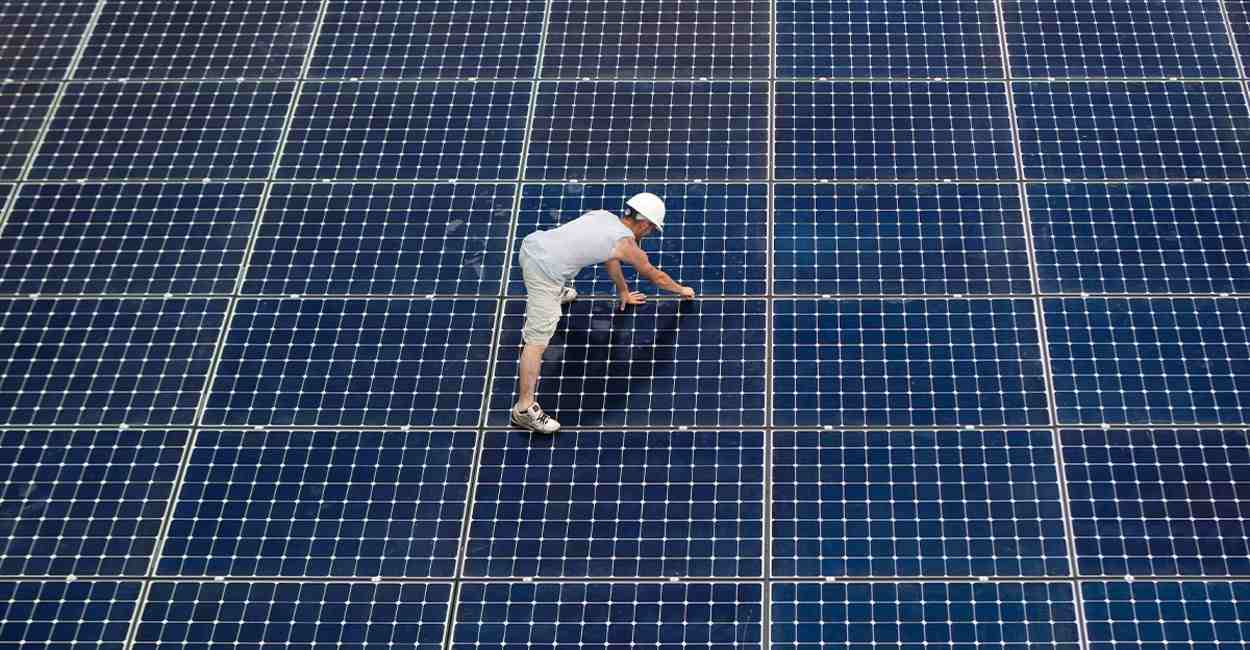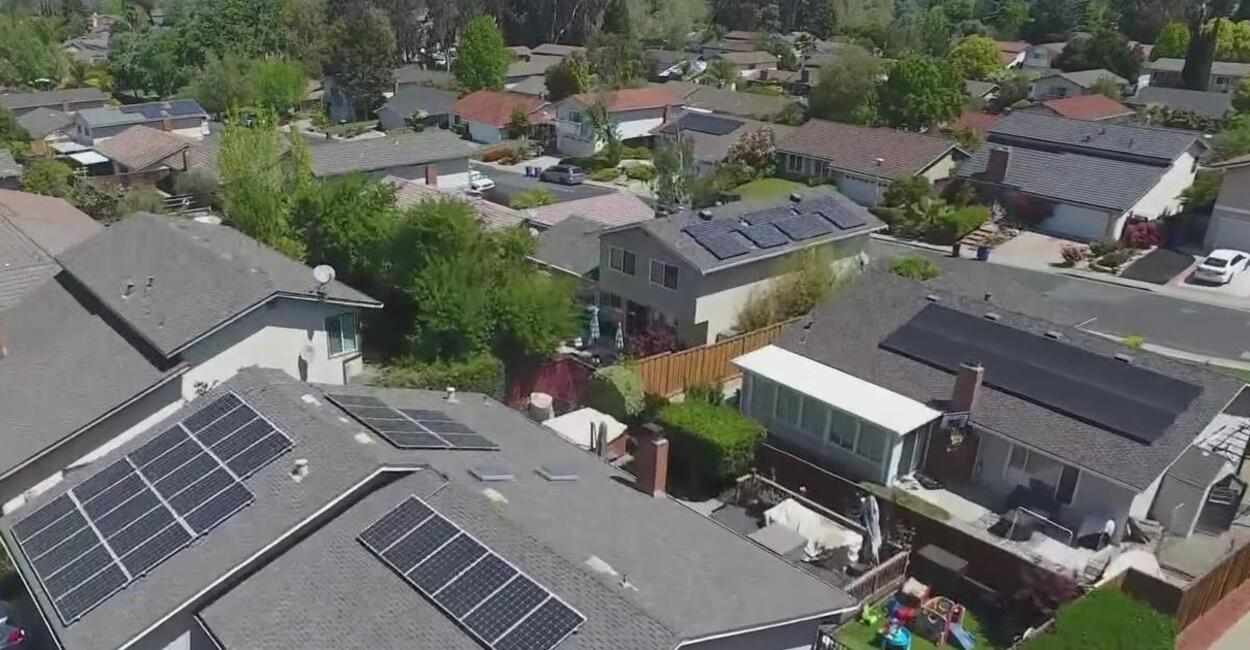California Pushes A New Plan To Cut Rooftop Solar Incentives

With zero involvement of the “solar tax”, California is taking a second crack at reforming its rooftop net-metering policies.
Pro-solar groups highlight a warning to the decision of the California Public Utilities Commission that they can still undercut the value of distributed solar for customers. That can further discourage them from adding the batteries to solar systems that are needed to store power and feed it to the grid when required.
Industry groups and advocates have been waiting for one year for the issue of CPUC to introduce a revised decision to replace its much-maligned net-metering plan. That proposal would have forced solar-equipped customers to pay monthly charges — dubbed a “solar tax” by the solar industry and environmental justice groups. It could be a potentially fatal blow to the state's rooftop solar economics. The plan was introduced after criticism from a wide swath of the public and politicians, including U.S. Senator Dianne Feinstein and Governor Gavin Newsom.
The new proposal dropping those monthly charges will facilitate some relief for solar industry groups that feared California could be on the verge of shifting from the most favorable markets for rooftop solar to the most fee-laden and expensive rooftops.
From the point of view of advocates, there are chances of harming rooftop solar economics. They follow a structure for charging solar-equipped customers for the electricity they use from the grid and paying them for the solar power they export to the grid. This can result in reducing the lifetime earning potential of rooftop solar systems.
Not only did the renewables advocates feel that the CPUC proposal fell short — but pro-utility factions also expressed disappointment for various reasons. Affordable Clean Energy for All is a group backed by the state’s three biggest investor-owned utilities, Pacific Gas & Electric, Southern California Edison, and San Diego Gas & Electric. The group mentioned that the existing net-metering structure is increasing the costs of maintaining the state’s grid for most customers that don’t have rooftop solar.
The debate between net-metering supporters and opponents has raged for years in California proposing cutting compensation for solar and other states. The proposal of CPUC will be subjected to intense scrutiny on these matters as it moves through public comments, like oral arguments scheduled for next week.
The proposed structure will come into effect after the spending of four months after the CPUC votes to approve it. As expected, the CPUC could vote on the proposed decision as early as December 15, which could put the new structure into effect as soon as April 15, 2023.
What Is The Workability Of The CPUC’s New Net-Metering Proposal?
The CPUC’s proposal is built around how net-metered solar is valued today for customers of the state’s three big investor-owned utilities. It is dependent upon two conditions that say:
Primarily, it would require customers willing to install solar to move to “electrification rates.” This installation will charge much more for power used during the “peak” hours of late afternoon and early evening when the state’s grid faces peak demand and much less during midday hours when solar power is full of energy and overnight hours when the request of the grid is low.
Alternatively, it will help replace today’s system of paying customers for the solar power they export to the grid. This is the concept of “spinning the meter backwards” from their current total retail electricity rate to an “avoided-cost” rate. The cost rate will be significantly lower than the old retail rate, but it could be higher in a handful of hours.
Both of these changes would substantially reduce the value of rooftop solar that generates and exports power consistently throughout the day. That’s a deliberate policy choice made by the CPUC that is trying to align the value of rooftop solar for customers with the periods when the state needs more clean power.
In California, there is an existence of 12 gigawatts of rooftop solar that are deployed already. Still, almost all of them are powering the homes and businesses to feedback to the grid when the state is already generating plenty of solar power. But the demand for grid power remains high during the late afternoon and evening hours when solar fades. The place of California relies on fossil gas power plants or electricity imported from other states — and sometimes, there are chances that the form is not even capable of fulfilling the requirement of electricity daily.
These conditions have led to summer grid emergencies during heat waves over the past few years.
That’s why the designing model or proposal of CPUC became explicitly essential to introduce to “incentivize the adoption of combined solar and storage systems.” Batteries in solar-equipped homes and businesses can store solar power generated at midday and discharge it during evening peaks.

Can Net Metering Drive A Growing Market For Solar-Plus-Battery Systems?
There is support for pro-solar groups towards the idea of policies that make solar-plus-battery systems more cost-effective. The matter of concern is that the complexity of the electrification rates and avoided-cost structures the CPUC is proposing could be more challenging for customers to justify the extra cost of adding a battery to their rooftop solar system.
Adoption of electrification rates, designed to reward customers who own electric vehicles and electric home heating systems and appliances for using power when they are full. To do so, these rates charge much more for “on-peak” grid power and quite a bit less for “off-peak” power. The time-of-usage rates that are now standard for residential customers of the state’s big three utilities.
As per the justification made by the experts, the introduction of on-peak and off-peak prices is an effective way to drive customers to shift towards solar energy consumption actively or to encourage them to install the same equipment to save money. Hawaii has recently instituted a solar rate that charges three times more for on-peak power than off-peak power. The structure can harm the customers who can’t or won’t intervene in how their homes use control to avoid the most expensive hours.
The avoided-cost compensation for solar power exported to the grid brings even more complication to a solar-and-battery project’s economic calculations. It helps to replace the well-understood retail rate value for how much a customer will be paid for every kilowatt-hour of power their solar system generates more than their consumption.
One of the major concerns for solar advocates is how quickly customers can earn back the cost of installing a net-metered solar or solar-battery system. Under today’s net-metering regime, average “payback” times are under the 5-7 year range. Last year’s CPUC proposal could have pushed those payback times out to 15 to 20 years, which would have put solar systems out of reach for all but the wealthiest customers; the solar industry groups have said this.
CPUC’s new proposal was designed to ensure that all new net-metered solar systems can pay back their costs within nine years or less. CPUC has proposed a “glide path” structure that will add several cents per kilowatt-hour to the net-metering rate for the first nine years of the system’s operation.

The CPUC proposal also offers an additional payment for lower-income residents who install solar and batteries, an essential part of California cutting for rooftop solar energy equity goals. This year's legislation would direct $900 million to assist families in financing solar-battery systems, with $630 million of that set aside for low-income customers.
But nonprofit groups, Vote Solar and the Center for Biological Diversity, stated that the levels of assistance offered to low-income customers aren’t enough to outweigh the loss in solar value from the proposal’s new rate structures.
As opposed to last year's proposal, the CPUC’s new proposal would exempt existing net-metered customers from the new net-metering structure. In other words, the new rules would apply only to customers who install rooftop solar in the future, apart from those who already have. It is capable enough to tackle the issue of how to encourage more people to install rooftop solar so that the industry can continue to grow the business, which the CPUC is required under state law to consider as part of its net-metering policy making.
A question that arises in the minds of people is whether this new structure will be facilitating enough certainty for that growth to continue, whether they will be able to make an accurate prediction of how much customers will save their time and when they’ll be able to start earning money on their investment. The matter is important not only for prospective solar buyers but also for solar vendors and installers trying to explain those values to customers and lenders financing those systems.
The latest attempt to strike a balance between the utilities and the solar industry brought more criticism than praise. The utility-backed coalition said it "fails to make the meaningful reform necessary" to ensure costs are fairly spread, while the California Solar & Storage Association said the proposal would "really hurt" the industry by making home solar panels less affordable.
"It is extremely disappointing that under this proposal, low-income families and all customers without solar will continue to pay a hidden tax on their electricity bills to subsidize rooftop solar for mostly wealthier Californians," Kathy Fairbanks, a spokeswoman for the utility-backed Affordable Clean Energy for All, said in a statement.
She further chided the commission for not further reducing state payments for solar consumers at a time when there is more federal money flowing toward solar panels and other clean energy. The federal spending law signed by President Joe Biden in August includes a 30% federal tax credit — estimated to be about $7,500 — for installing solar panels within the next decade, according to the U.S. Department of Energy.

